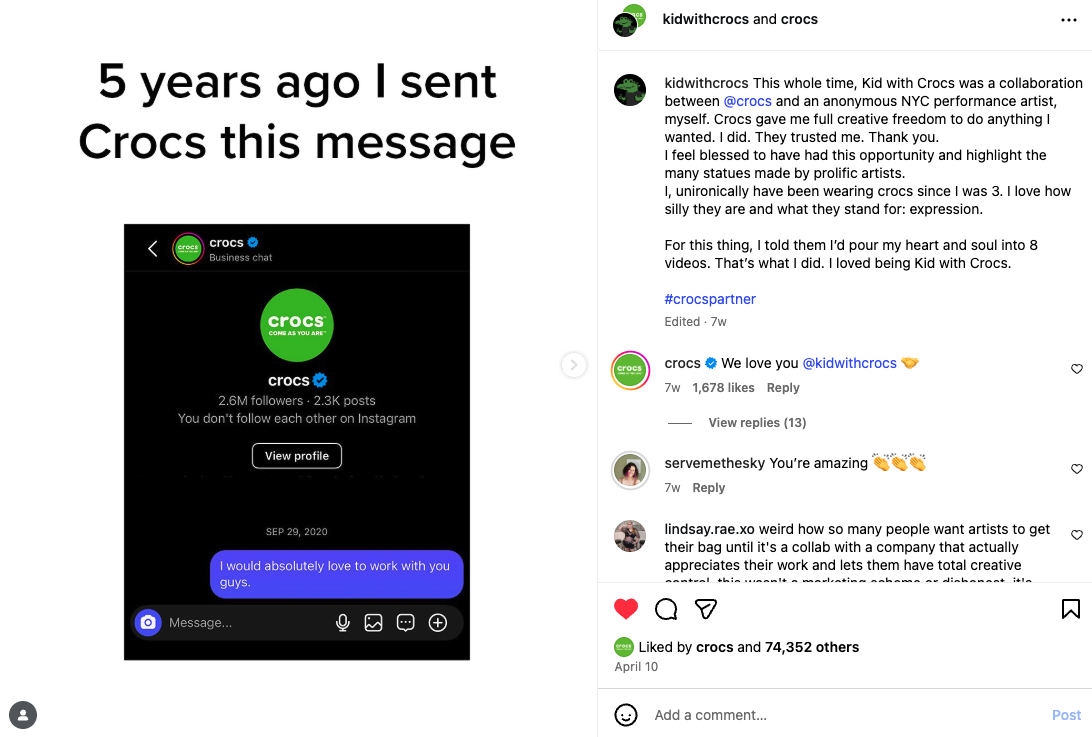7 Mistakes to Avoid When Starting a New Instagram Account in 2025
/So you’ve asked yourself these 5 questions and determined that Instagram is the right fit for you and your business. You have the bandwidth, you know your audience, and you have goals in mind. You’re all ready to launch. How do you launch well? Avoid these 7 mistakes when creating a new Instagram account and you’ll be golden.
1) Don’t use a weak password or poor security practices.
Honestly, if you’re not using a password manager yet, you should be. I use 1Password and it’s been a lifesaver. Password managers are more secure and efficient than saving passwords in your notes app–or worse, a literal post-it note in your desk drawer. If multiple people will be logging into the account, a shared vault in a password manager will help keep everything organized and secure. The password manager can even generate a strong password for you so you don’t have to wrack your brain coming up with something.
Two factor authentication is also recommended as an easy way to improve your online security. Each platform, Instagram included, has its own 2FA security option and instructions on how to set it up. Find guidance for Instagram two-factor authentication here.
2) Don’t use a profile picture that’s confusing or mysterious.
Your profile picture will appear as a circle, so plan accordingly. Using your logo is typically your best move. There are a few exceptions. If you’re a brick-and-mortar business that’s iconic in the local community–perhaps you’re known for an eye-catching mural on the wall or you’re located in a super unique building–then a picture of your building may be more effective than a logo.
Meanwhile, if you’re an individual getting started as a content creator or influencer, a photo of yourself is a must. Find one you love; it doesn’t have to be a professional headshot. These days, even a selfie can work well. Trying to be mysterious doesn’t work well when you’re building a personal brand (unless it’s a gimmick and done intentionally, like Kid With Crocs). It’s a personal brand after all. Be yourself and be confident about it.
in the case of “kid with crocs,” his anonymity was part of the gimmick. he later revealed his identity once the collaboration concluded
3) Don’t write a wordy bio.
Writing a good bio is harder than it seems! You only get 150 characters, so you must be concise and engaging. Flowery language is not the move.
The most common mistake I see is writing a bio that’s very focused on you and everything you want to get across. Write your bio geared toward your target audience. Why should they care? What makes you worth following? Keep your bio brief and focused on the people you’re trying to serve.
National geographic always has a concise, catchy bio that speaks directly to their target audience
4) Don’t leave things blank.
Username, profile picture, bio, good to go! Right? Wrong. There are several other sections you should fill out carefully! Otherwise, you’re missing out on chances to optimize your profile and help the right people find it.
If you have a brick and mortar location, make sure to add your address. You can also set up call-to-action buttons depending on your business and needs. Instagram offers options like book now, email, and call, so you can set up whichever ones make sense for you.
Make sure you add links to your profile as well. You actually don’t need a third party tool like Linktree to do it! Instagram now allows you to add up to 5 links to your bio natively in the app. You don’t need to have 5 links, but having at least a couple is a good idea. Dumping people right on the homepage of your website can be a frustrating experience, so try sending them to a specific landing page, or promoting something like a newsletter, blog, or podcast.
multiple links in the bio of my client, push physical theatre
5) Don’t forget to switch to a professional account.
A personal account isn’t going to cut it anymore. Professional accounts give you access to a dashboard with analytics, permissions linked to Facebook pages, contact information, category labels, a secondary inbox, and more. You can choose to be either a business or a creator.
Creator typically makes the most sense for content producers, influencers, artists, and public figures. If you’re creating content as a passion project, this is the right profile type for you. A business account is ideal for service providers, businesses, and nonprofits. You can switch your account type at any time, never fear.
6) Don’t forget to engage with others.
Many people forget that social media is not a one-way street. We should never be endlessly promoting into the void. It’s supposed to be social. Follow other people, like and comment on their posts, reply to their stories. Share their content with your audience and add your own commentary. Engaging and amplifying others’ content shows you’re an active participant in a community, not just someone with a megaphone standing on the virtual sidewalk trying to get people to buy your stuff.
7) Don’t put all your eggs in one basket.
Instagram isn’t the be-all, end-all of social media platforms. It’s essential to diversify from Meta; these platforms could go away at any time. Investing in a presence on other social media platforms, or other forms of digital marketing like a Substack or newsletter, a blog, or a podcast, is well worth your time.
For more social media insights from myself and other industry experts, check out my podcast!






